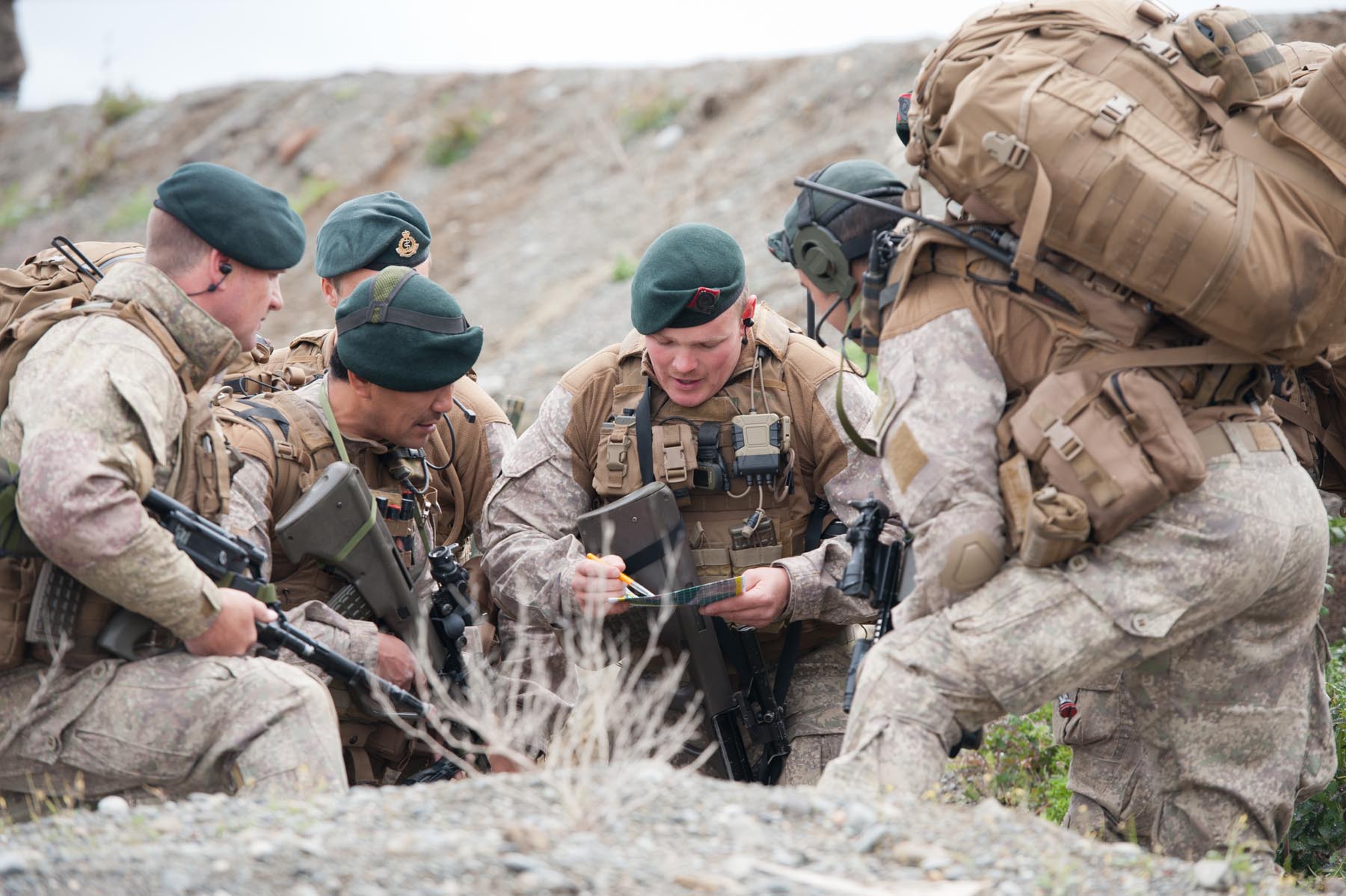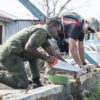TACTICAL AND PLANNING EXCELLENCE:
CHANGES TO THE NZ ARMY’S PLANNING DOCTRINE AND TACTICAL SCHOOL COURSES
By Chief Instructor, Tactical School
This series, written by the Chief Instructor of Tactical School, is comprised of three individual articles that will be published individually in succession over the period of 10 days. The three articles are titled: Tactical and Planning Excellence: Changes to the NZ Army’s Planning Doctrine and Tactical School Courses, Changes to Doctrine and Process: Enhancing Interoperability, and Teaching Tactics: Changes to the Grade 2 and Grade 3 Courses.
Change is coming to the way the NZ Army plans. Late last year a new Staff Officers Handbook, sponsored by the Tactical School in the Mission Command and Training Centre, was drafted and released to provide a general reference for individual and staff planning in the NZ Army. Codified as the NZP 86-1 Staff Officers Handbook, it is the foundation reference used on Grade 3 and Grade 2 Staff and Tactics courses but will have wider utility and relevance for all those involved in tactical planning or working in a headquarters. While the Staff Officers Handbook reinforces and refines a number of existing planning tools and techniques, it also introduces a revised NZ Mission Appreciation Process (MAP) that will standardise tactical planning across all units and schools. Importantly, the revised MAP will better align our process against Australian and American processes for enhanced interoperability.
Why Change?
With eight years of observations and lessons since the last series of major revisions were made to the Staff and Tactics courses, combined with lessons from other ABCA armies, areas for improvement in our planning references and processes have been identified. Overseas armies are reorienting towards high-end, conventional warfare, and with it a greater focus on a maintaining a combined arms, manoeuvrist mind-set. The NZ-specific MAP that was previously taught at the Tactical School had incorporated a range of operational-level, operational design and stability-specific steps that increased the number of planning steps, the complexity of the process and the work required to get to an approved COA. The Tactical School MAP had not been adopted across other areas of the army; reunifying the individual and staff MAP and bringing an army-wide process back into line with approved doctrine was identified as being a necessary and desirable step.
Finally, the Land Component Commander’s (LCC) review of the 2021 Officer Evaluation Board confirmed and guided this need for change. LCC’s intent is that the New Zealand Army develop Officers who have a strong manoeuvrist approach to planning, are grounded and capable combined-arms tacticians, and possess the skills and experience to operate in a range of different headquarters. This has resulted in a number of changes At Tactical School. These have now been incorporated into the new NZP 86-1 Staff Officers Handbook and the NZ Army MAP, as well as upcoming Tactical School courses.
A Revised Planning Process for the NZ Army
 The NZ Army’s MAP is once again based upon the Australian Army’s LWD 5-1-4 MAP doctrine. A small number of NZ-specific modifications to the LWD process have been made, following direction from the LCC to maximise a manoeuvrist mind-set and ensure wide-ranging interoperability across ABCA forces, these include:
The NZ Army’s MAP is once again based upon the Australian Army’s LWD 5-1-4 MAP doctrine. A small number of NZ-specific modifications to the LWD process have been made, following direction from the LCC to maximise a manoeuvrist mind-set and ensure wide-ranging interoperability across ABCA forces, these include:
- The NZ Army will continue to use the US Army’s Warfighting Functions (WFF), with the addition of ‘Influence Activity’, instead of the Australian Army’s Battlefield Operating Systems; and
- The Australian Army’s concept of developing an operational framework in their ‘Decisive Events’, which is expressed as an intent paragraph, is further refined in a NZ Army specific approach to align with the US Army’s decisive / shaping / sustaining framework linked to US Army’s definition of defeat and stability mechanisms.
Returning to the 5-step LWD 5-1-4 process ensures our thinking and planning follows with the Australian MAP while being aligned with other partner forces, most notably the United States Army. It also returns us to a unified planning hierarchy where our combat, individual, staff and joint appreciation processes link together and share a common foundation in Australian doctrine. Further information can be found in the second article in this series (published second in succession after this article), including details on the revised planning process, the new NZP 86-1 Staff Officers Handbook and procedural notes, changes to the definition of ‘sequel phases’, centre of gravity analysis, back-briefing forms, red teaming techniques, force ratio analysis and factor analysis.
Teaching Tactics: Changes to the Grade 2 and Grade 3 Courses
In addition to drafting and introducing the NZP 86-1 and associated planning process, Tactical School has continued to evolve and revise how tactics are taught and practised. Both the Grade 2 and Grade 3 courses have a strong lineage in our organisation, having produced a capable and competent staff officer corps that has been repeatedly validated by the ability of NZ Army officers to work in demanding, intensive operational environments. However, with a return to conventional warfighting amongst our partner armies overseas, and with our own Army experiencing vastly reduced ‘field time’ at sub-unit and unit scale due to Operation Protect, the LCC has directed that the Grade 2 and Grade 3 courses look to reinforce areas that are essential to generating a modern, capable and credible land force. This includes the emphasis placed on maintaining our people’s interoperability and their manoeuvrist mind-set, which has been discussed above and includes the revised planning process and the new NZP 86-1 Staff Officers Handbook. In addition, the Grade courses have been revised to provide an enhanced focus on combined arms warfighting and the mechanics of Battle Group and Brigade tactics. Tactical School has looked to reinforce what has validated well in recent courses and capture the ‘best practices’ in instructional techniques to achieve this. This has seen a number of changes to how the Grade 2 and to how Tactical School teaches tactics. Further information can be found in the third article in this series (published third in succession after this article), including detail on changes to the Grade 2 syllabus, a revised After Action Review process, the introduction of a Land Tactics Centre of Excellence, the use of simulation and the introduction of new Tactical School handbooks for each doctrinal package.
Conclusion
Changes to the NZ Army’s planning process and to the Grade 2 and 3 courses support the LCC’s intent of developing Army officers that possess a strong manoeuvrist mind-set, are capable, competent and confident combined-arms tacticians and who have the ability to work with a range of international partners. These changes build upon the existing strengths of our training system and of our people.
Every effort has been made to ensure that the Tactical School continues to deliver relevant and world-class training to meet the NZ Army’s needs, and that the future generations of Grade 2 and Grade 3 officers remain prepared for the challenges of tomorrow’s battlefields.
Final Note: While we are confident that we are continuing to deliver capable, relevant and world-class Grade 2 and 3 staff officers through the well-established Grade 2 and 3 Staff and Tactics courses, we remain interested in feedback from across the Army of how we can continue to evolve and improve upon our training system to continue to meet the security and battlefield challenges our people will face into the future. Debate, discussion and feedback on what we train and how we train at the Tactical School will always be welcome, and KEA provides the means for you to share your ideas, thoughts and arguments.






